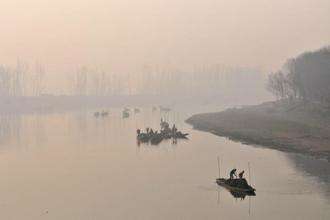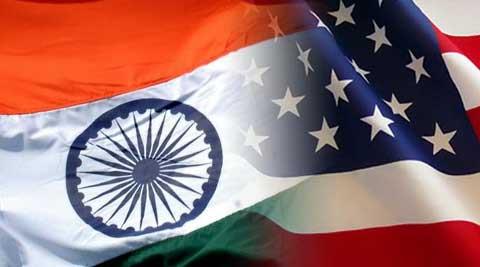February 2, 2017
Islamabad: The 40-year-old Indus Water Treaty between India and Pakistan has been an outstanding example of conflict resolution but the scarcity of water in the basin states since the early 1990s has brought the agreement under strain and its “survival appears weak”, according to a UN report.

February 2, 2017
Islamabad: The 40-year-old Indus Water Treaty between India and Pakistan has been an outstanding example of conflict resolution but the scarcity of water in the basin states since the early 1990s has brought the agreement under strain and its “survival appears weak”, according to a UN report.

According to the IWT Beas, Ravi and Sutlej are to be governed by India while Indus, Chenab and Jhelum (above) are to be taken care by Pakistan. Photo: Waseem Andrabi/HT
“The treaty fails to address two issues: the division of shortages in dry years between India and Pakistan, when flows are almost half as compared to wet years, and the cumulative impact of storages on the flows of the River Chenab into Pakistan,” said the UNDP report titled ‘Development Advocate Pakistan’.
Wular Barrage and Kishenganga project on the Jhelum and Neelum rivers present a similar problem whereby water storage during the Rabi season is critical as flows are almost one-fifth of the Kharif season, according to the report, which was released on Wednesday.
“For over 40 years, the Indus Water Treaty has proved to be an outstanding example of conflict resolution. An increase in water stress in the basin states since the early 90s has brought the treaty under strain. In fact, its survival appears weak, although there is no exit clause,” it said.
The report said that Pakistan has gone as far as calling the treaty an inefficient forum for resolving water issues, elevating the water issue to a “core issue” and including it in the composite dialogue. But India has refused to include the issue in the composite dialogue because it is not ready to discard the treaty.
The treaty permitted India to create storages on the western rivers of 1.25, 1.60 and 0.75 million acre feet (MAF) for general, power and flood storages, respectively, amounting to a total permissible storage of 3.6 MAF.
“A clear ambiguity in the treaty occurs in its permission to be interpreted differently, thereby creating conflicts between Pakistan and India. The treaty also fails to clearly address India’s share of shortages in relation to storage dams on the western rivers, an issue of major concern,” according to the report.
As a consequence of climate change, shrinking glaciers and changing precipitation patterns render the need to address issues of water scarcity and resources, it said. “During floods, for example, the majority of the water runs into the rivers of Indus-Pakistan which leave the province of Sindh flooded. Such negative setbacks on the economy will eventually have dire consequences if not addressed,” the report warned.
It said that with control of the River Chenab through the Salal dam, India has several plans under way for the development of hydropower with enhanced water storage on the western river. Pakistan continues to face reduced flows from the Chenab owing to the recent storage of water in the Baglihar dam.
According to the report, annual flows in the Chenab during wet years have continued to decline since 1958-59 with an increase in droughts since 1937-38. “Same is the case with the River Jhelum being controlled by India. Since the river is a major source of irrigation and hydropower for Pakistan, it will pose dire impacts for the country if India chooses to close the gates of the barrage,” the report said.
Courtesy: LiveMint
















































































































